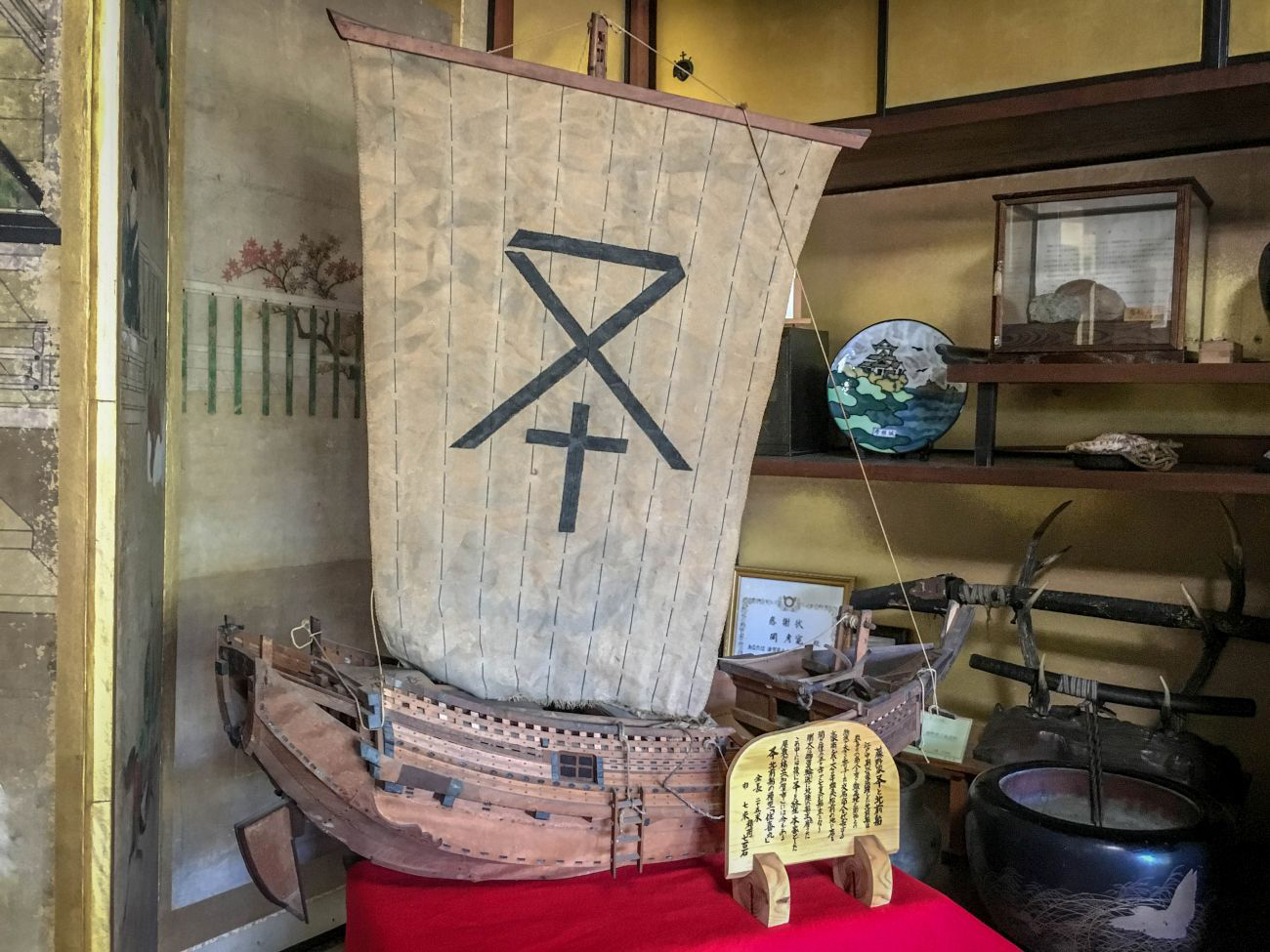Itō Chūbē
Itō Chūbē
Ōmi merchants whose humble products built a globe-spanning commercial empire
place Area: Toyosato
access_time Published: 2020.03.19
Name in Japanese: 伊藤 忠兵衛
Itō Chūbē the first: 1842 to 1903
Itō Chūbē the second: 1886 to 1973
There were two generations of people called Itō Chūbē – the name became so valuable that it was passed down. Both the first and the second Itō Chūbē were born in Toyosato, Shiga.
The first Itō Chūbē, who lived from 1842 to 1903, was one of the founders of the uniquely Japanese business model, the general trading company, a conglomerate of a vast array of diversified businesses that work in synergy together, seeking out and leveraging global opportunities. Itō Chūbē founded two major trading companies, Itochu and Marubeni, which today do business around the world in a wide range of segments.
The original Itō Chūbē was the second son of the fifth Itō Chōbē. His father was already the fifth in a line of a family that sold linen textiles under the brand name Benchō. They also owned some rice fields in several towns.
Chūbē and his older brother Chōbē (the sixth) began the expansion of the Itō empire when they began to peddle Ōmi linen in Sakai near Ōsaka and Kishū, today’s Wakayama in 1858. Today’s massive conglomerates, Itochu and Marubeni, regard 1858 as their respective founding year.
Chōbē purchased goods in Ōmi and later opened Ito Chōbē Shoten in Hakata, Kyūshu. In 1872, Chūbē opened a shop called Benchū in Ōsaka selling kimono fabric, cotton goods and linen. The two shops repeatedly merged and split, resulting in the the current Itochu and Marubeni.
When Benchū opened, Chūbē established rules for the shop, dividing profits into three categories, allotting 50% of the net profit for his family, 30% for a reserve fund for the shop, and 20% for employees’ salaries. The idea for motivating employees through dividends was based on the traditional Ōmi Commercial Code. Chūbē was a devout follower of Jōdo Shinshū Buddhism and regularly attended his local temple in Ōsaka. He believed that business could also be a form of Buddhist devotion. He actively sought to develop his employees as people and regarded profit-sharing as the true path to business prosperity.
In 1885, Chūbē founded a cooperative association and began direct trade from an office in Kōbe. He opened a cotton yarn wholesaler in Azuchi in 1893. In 1896, he formed a company that imported Chinese cotton and exported Japanese cotton yarn.
In his later years, he served as the head of his local village, Toyosato. In 1894, his brother Chōbē died, aged 61. In 1903, Chūbē died at his second home in Kobe. His second son Seiichi inherited the family name to become the second Itō Chūbē and head of the Itochu combine.
The second Itō Chūbē was born in Toyosato in 1886. With the death of his father in 1903, he took the now prestigious name. At that time, he was still enrolled in Shiga Prefectural Commercial School, aiming to enter Tokyo Higher Commercial School, but he abandoned his studies and joined the company then called Marubeni Itō Honten. The company opened an office in Shanghai in the 1890s and started business in Seoul in 1905, but these first overseas ventures met with considerable difficulties. In 1909, still within the Meiji period, he went to England for a year of study. 1914, in the Taisho period, he established the Itochu company and built a new office in central Ōsaka. The stock market crashed in 1920, and the business and shops of Itochu and Marubeni were hit hard. Chūbē sold the entire property of the family to repay the companies’ debts.
During WWII, Itochu and Marubeni amalgamated into a single company focused on war production. After the war, the American authorities broke up the business, but with the onset of the Korean War, Itō resumed business, bartering Japanese textiles for foreign grain, and trading in petroleum, aircraft, cars and machinery to meet UN forces requirements. The company expanded its overseas mining and petroleum exploration in the late 1960s and early 1970s, followed by large-scale overseas industrial projects in the 1980s. Marubeni was rocked by several accounting and bribery scandals in the 1970s and 1980s.
The second Chūbē is known as a pioneer of the movement to use katakana characters in place of kanji. Partly due to the influence of Chūbē, katakana was used in the official documents of Itochu and Marubeni before and after WWII. Later in life he became interested in education that balanced the ethical, physical, and intellectual realms, and he became involved in the management of Kōnan Gakuen school in Kobe. He died in 1973 in Atami, Shizuoka, aged 86.
Visitors to the modest precincts of the Itō Chūbē Museum in Toyosato are likely to experience a frisson of dissonance when they consider that not one, but two global conglomerates sprang from what today appears a rural backwater.


